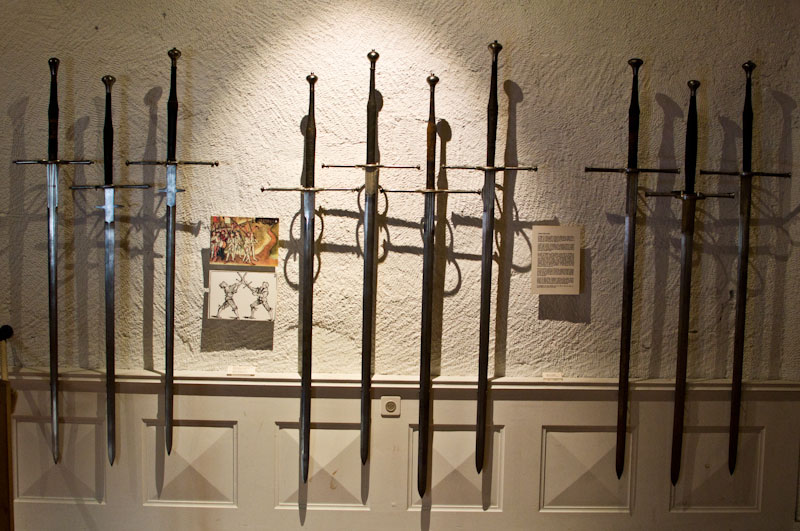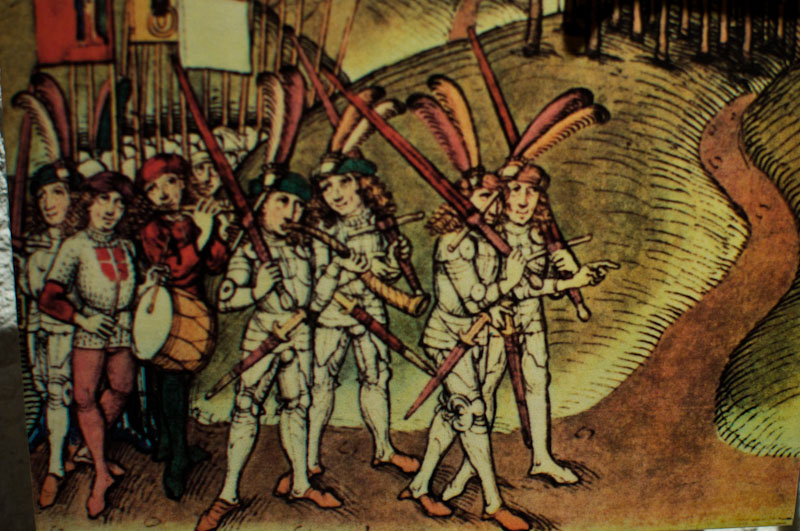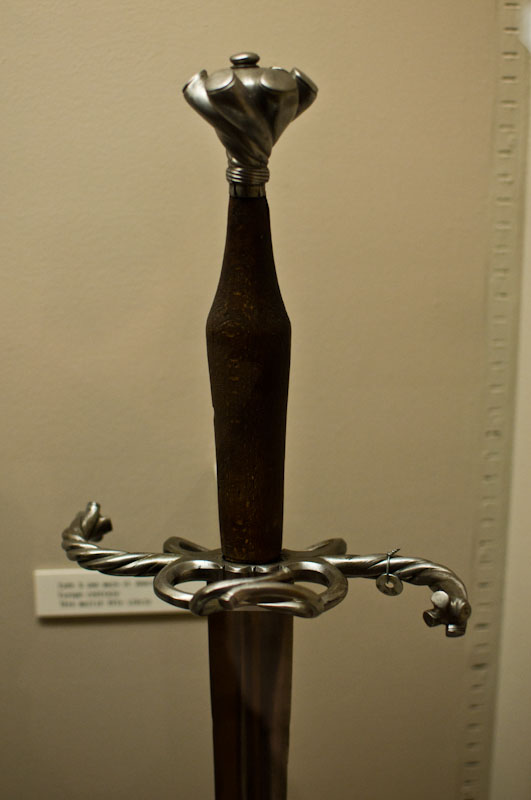So I have a couple of questions:
1. Are these swords considered zweihanders, montantes or just large longswords? Are they the famous two-handed swords used to break pike formations and guard banners, or just ceremonial swords?
2. The secondary guard is very close to the hilt on one of the swords, I doubt you can place your hand under it. What's the point then?
3. Are they typically Swiss swords, or just early german two-handers in general?
4. Are they replicas or original pieces? If original, they are in very good condition.
5. How would you date them? Is 1500-1530 a good guess?
6. There are many different blade types, hexagonal, diamond cross section, multiple fuller, one fuller etc. Is there any difference between these in terms of the blade's function?
7. I saw a post on this forum, in which there was a discussion about two-handed swords generally having thin, flexible blades. Is this true about these swords too, or is it dependent on the blade's cross section?
8. What are the 2 illustrations on the wall? Where are they from?
Any other information is welcome as well of course. :)
Thanks in advance!




